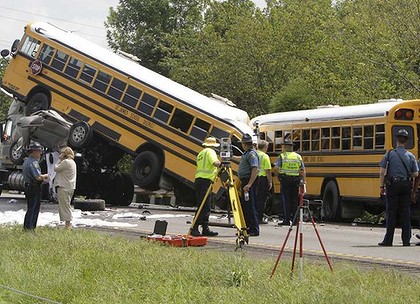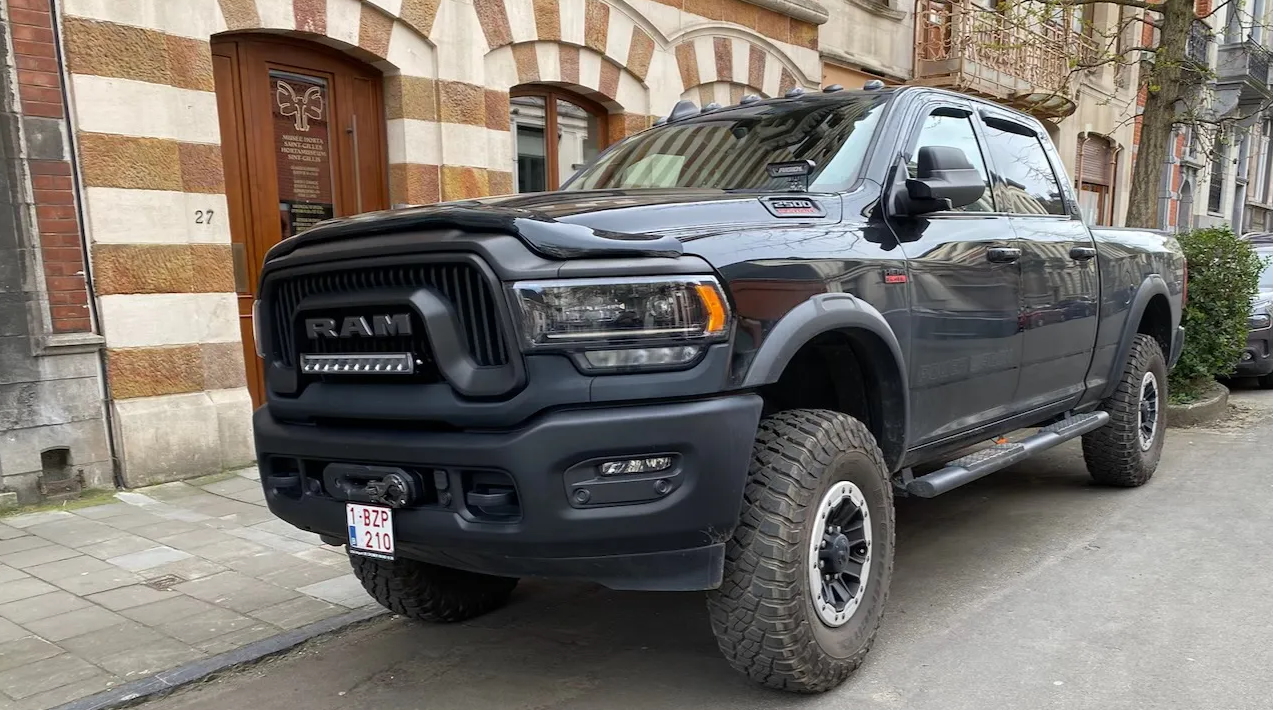In Missouri last year, a 19-year-old driving a pickup at 55 mph sent or received 11 texts in the 11 minutes immediately before he caused a deadly crash.

The ensuing collision killed the texting driver as well as a 15-year-old student who was on a high-school band trip to the Six Flags amusement park in St. Louis. Thirty-eight others were injured.
An investigation into the crash led the National Transportation Safety Board this week to issue a call for all states to ban all cell phone use by drivers, except in emergencies. Currently, 35 states and the District of Columbia ban texting while driving, and 30 states ban all cell phone use for new drivers. Only nine states and DC have overall bans on hand-held cell phone use.
“Distraction-affected” crashes killed 3,092 people last year, according to the National Highway Traffic Safety Administration.
The NTSB isn’t recommending a federal ban but rather identical state bans everywhere in the country. Some speculate that the Interstate Commerce Clause precludes a federal ban, but I haven’t heard any of the agencies explain the legal basis for pursuing only state laws.
It was widely (mis)reported last week that Transportation Secretary Ray LaHood had gotten behind a federal ban on cell phone use. In fact, LaHood is supportive of state bans but hasn’t gotten behind a federal ban. He has talked about passing “good legislation in Congress" to do for texting what the .08 blood alcohol threshold did for drunk driving, but nothing that would amount to a ban.
The NTSB recommendations aren’t binding, but they’re raising the profile of the dangers of all cell phone use, not just texting or calling from a handset. The NTSB doesn’t distinguish between hands-free technology and other use of portable electronic devices. They consider it all distracting, as does Focus Driven, an organization devoted to ending distracted driving.
“Studies show hands-free devices provide no safety benefit,” says Focus Driven’s website. “The area of the brain responsible for processing moving visual information—a vital part of driving—has 37 percent less capacity to gather and process critical driving data and instead focuses on the cell phone conversation.” Carnegie Mellon researchers found that people talking on the phone drive the way people drive when they’re drunk.

All portable electronic devices except GPS units are recommended for bans by the NTSB.
NTSB Chair Deborah Hersman placed some of the blame for the high number of distraction-related crashes on all the bells and whistles on today’s electronic devices.
“Every year, new devices are being released,” she said. “People are tempted to update their Facebook page, they are tempted to tweet, as if sitting at a desk. But they are driving a car.”
The Alliance for Automobile Manufacturers defended onboard entertainment systems, saying people are used to unfettered access to communication and that at least now they can do it without taking their eyes off the road.
Cell phone makers were quick to agree that "manual texting while driving is clearly incompatible with safety,” but wouldn't take a position on hands-free technology, saying they’d “defer to state and local lawmakers and their constituents” about what should be done.
The efficacy of cell phone bans is still an open question. Despite state bans, texting and driving is up 50 percent in the past year. Missouri’s texting ban for young people didn’t stop last year’s tragic crash from happening. But a commitment to enforce the laws can make a difference. Pilot programs in Syracuse and Hartford supported by U.S. DOT substantially reduced texting and cell phone use while driving.
Any successful effort to curb distracted driving will have to change widespread public attitudes. While many people feel nervous riding in a car where the driver is using a cell phone, they also believe they can do it safely themselves. The Washington Post reports that 88 percent of people surveyed said they knew it was dangerous to use cell phones while driving – but a third did it anyway.





